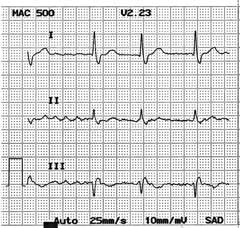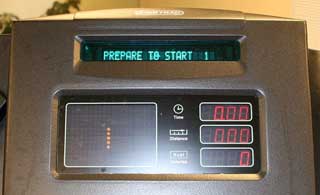Feature Article
This Ain't Science

As I write this, the article
The
Scientific 7-Minute Workout has been at the top of the NY Times "most e-mailed" list for a few days. This makes me sad.
Because this ain't science.
The article is based on one
from the American
College of Sports Medicine's Health & Fitness Journal which makes me even sadder, because the ACSM is one of the top certifiers of personal trainers.
First, a quick summary. Since many people don't have time to exercise, they recommend High Intensity Circuit Training consisting of
multiple exercises performed for 30 seconds each with a 10 second transition period and give an example with 12 exercises for a 7
minute workout.
So what's the problem? I hardly know where to begin.
OK, let's start with "HICT." WTF? This already has a well-accepted name: High Intensity Interval Training (HIIT, although
some doofuses use "HIT" apparently unaware that there's a different training protocol with those initials). Did they
change it to make theirs seem unique?
Then there's the math. Doing 12 exercises for 30 seconds each would be 6 minutes. Add the 10 seconds to transition 12 times and
that's 8 minutes. Plus their 12th exercise is side plank which would need to be done on both sides.
And while their article uses lots of scientific-looking numbers and references to percentage of VO2 max, plus a bunch of citations,
there's nothing scientific about their HICT program; they just cite some studies then make some stuff up that kind of fits some
of the results. Except when they contradict some of their own citations and even some of their own guidelines for creating a HICT program.
For example, there's stuff like:
- After stating that the circuit should "promote strength development for all major muscle groups of the body", they give
an example with no upper body pulling (e.g., pull-ups). This also violates their statement that it should
"create a balance of strength throughout the body" which is impossible without pulling.
- They recommend the exercises "use large muscle groups" yet include triceps dips and crunches (crunches??).
- Their recommended work-to-rest ratio of 3:1 (30 seconds work, 10 seconds rest) is way too hard for almost
everyone. Most people are best served with a 1:1 ratio. Very fit people can handle a 2:1 ratio for a while, but 3:1 will have
anyone in distress after just a few rounds, and that leads to a lowering of the intensity ("pacing" oneself) to
compensate. So there goes the "high intensity" part that is critical.
- Indeed, one of their own references showed a longer rest period led to more overall calories burned than the shorter one,
albeit with a consequently longer workout. Interestingly, the higher-intensity workout in that actually-scientific study used
a 3:2 work-to-rest ratio (30 seconds work, 20 seconds rest). And it wasn't an HIIT study; it was comparing rest periods
between lifting. The HICT guys just lump it all together as if there's no difference.
- How are planks "high intensity"? They might be hard, but they're not high intensity.
- And for some people, 30 seconds of plank is really just a rest period, while for others it's simply impossible. Indeed,
that's a problem with any one-size-fits-all workout plan, and it's particularly bad here where some exercises will be
extremely hard for most people to do correctly (e.g., step-up) while others will be far to easy for many (e.g., planks and
crunches).

- The HIIT studies are done with exercise bikes, not resistance exercises, because those exercises are not conducive to doing
continuous high-intensity work: they have a built-in rest period (e.g., the lowering part of a push-up). Again, there's a difference
between "hard" and "high intensity".
- And that's another thing: they state that the exercises should "promote strength development" but still push
oxygen usage (be high-intensity). Those are competing goals. If you want to get stronger, do strength training. If you want
improved cardiovascular performance, do high-intensity training. Trying to do them at the same time just does a sucky job of both.
- The step-up is a total body exercise? Really?
To be clear, HIIT is a great conditioning protocol with proven health benefits such as improving (decreasing)
insulin resistance. And strength training has many known health benefits as well...by all means, do it! Just don't combine
the two and pretend you can get it all simultaneously. (At StrongFast, we do some 1:1 weight circuits but have separate workouts that
focus on strength development, depending on individual goals. And we'll do some kickboxing work at 2:1, but it doesn't
last for long.)
I don't have enough room here to go into all the details about how they misused their citations, but the intrepid among you
can check it out for yourself. It's not rocket surgery.
And HICT? This ain't science.
Be seeing you.
-gary